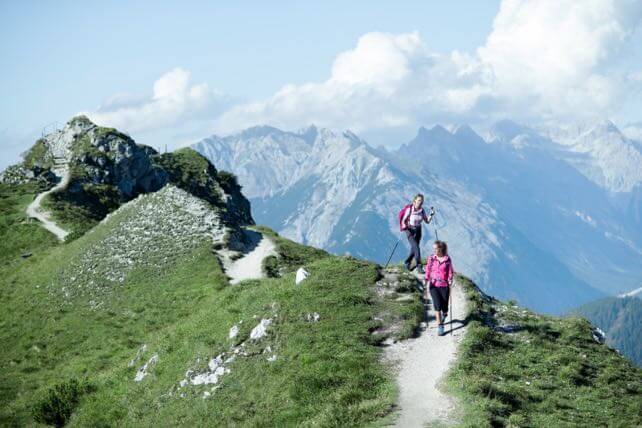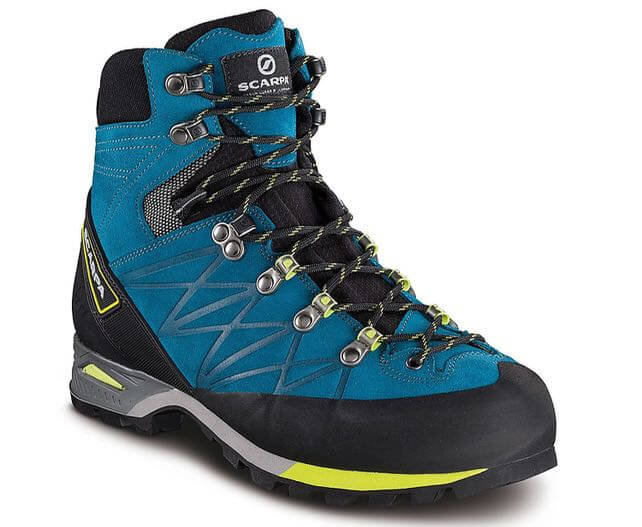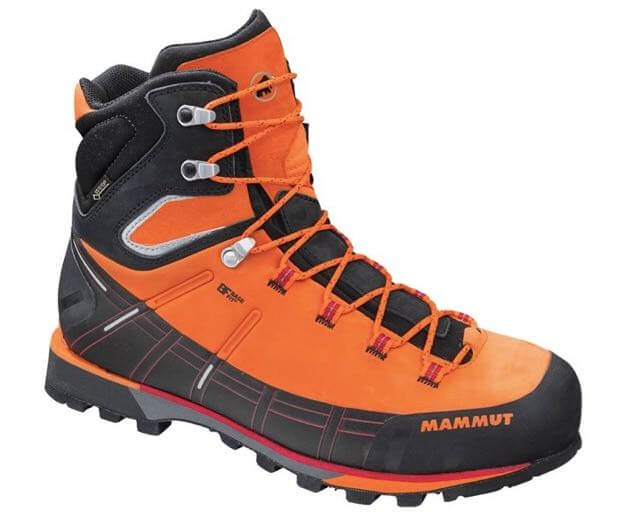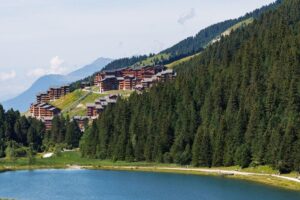
What are the best hiking boots for the Alps? “That all depends where you’ll be walking,” says Ben Ankers, boot guru at the giant Go Outdoors emporium in Penrith, Cumbria. These days, Ankers’ stomping ground may be England’s Lake District, but he’s spent several summers in the Alps, and has walked thousands of miles of mountain trails – many of them in the Italian Dolomites. For him, the choice of boot should always be determined by the ground beneath your feet.
“Essentially, you’ve got to decide whether or not you’ll be tackling rocky ridges and peaks – especially above the the 10,000ft mark” he says. “Up there, you’ll find a lot of shattered rock and technical terrain, and you may need to don walkers’ crampons to cross snowfields. This kind of hiking demands extra stiffness from the boot, and more ankle support.”
Lower down – on steadier, gentler slopes – a less specialised, more flexible hiking boot will work. But whatever terrain you aim for, there are four key elements to consider when it comes to buying your boots.
FIT
Many of the best mountain boots are made by companies based in the Alps, or very near them – brands such as Scarpa, La Sportiva, Mammut and Asolo. They look great and have years of mountaineering heritage behind them. “But you shouldn’t set your heart on any one brand,” says Ankers, “because first and foremost a boot has to fit you correctly.” There’s no point having something snazzy and prestigious on your feet, if at the end of the day you’re covered in blisters.
Just as with ski boots, each manufacturer builds hiking boots around its own last, and they’re all slightly different. The only way to find out which suits your foot shape is to go into a shop which stocks boots by lots of different manufacturers, and try as many on as possible. Don’t even think about buying online, even if you’ve had success with a particular brand in the past: because your feet change shape as you get older. And don’t try to rush the process.“You need at least an hour in the shop to get the fitting right,” says Ankers.

WEIGHT
Steep slopes, rocky paths, thin air, warm weather: the Alps in summer are a beautiful place to go walking, but they do demand a lot from your feet. As a result, many experienced Alpine hikers prefer boots that are lighter than the ones they’d use in the UK. “Look for a pair that mixes fabric and leather, with a water-resistant, breathable lining by Outdry or Gore-Tex,” advises Ankers. “Because they’re lighter, it means they’re more nimble and less tiring than some leather choices.” Just be sure to buy a pair with a decent rand above the sole, especially if you’re aiming for rockier slopes. The rand is the broad strip of rubber protecting the boot from nicks and scrapes – which could puncture its waterproof lining.
SOLE
Obviously, you need lots of grip. Vibram is still the gold standard when it comes to hard-wearing and sure-footed soles, and these characteristics become ever-more vital the higher you climb. Tread depth is important too. The rockier the path, the deeper it should be.
But above all, a boot for the high Alps needs to be stiff. Much of this stiffness is provided by the midsole, buried in the base of the boot. It provides a stable platform when you’re stepping up rocky paths or balancing on narrow ledges, and it’s absolutely essential if you’re wearing a pair of walking crampons to cross a field of snow and ice. Only those boots rated B1 or above will take a crampon.
Lower down, something more flexible is the better option. It’ll be both lighter and much easier to walk in. These are the kind of boots Tirolean walking guide Peter Schonner uses above the grassy slopes and meadows of Alpbach: “ankle-high, with a medium-hard sole and both breathable and water-resistant,” he says. Schonner still needs his boots to be hard-wearing, though. “I wear my boots about five times a week in summer,” he says, “and after two years the sole is finished.”

CUFF
If you’re wearing a stiff B1 boot that takes a crampon, you need it to rise higher above the ankle and be made of firmer material than a regular boot. “Something with a high cuff, such as Scarpa’s Marmolada Pro OD boots, is what you should be aiming for,” says Ankers. This cuff provides essential support and leverage, when it comes to controlling the boot, and makes your foot placement more precise.
For less demanding slopes, a softer, mid-height cuff makes for more comfortable walking.
Check out our guide to summer holidays in the Alps for more on the off-season.













Add Comment